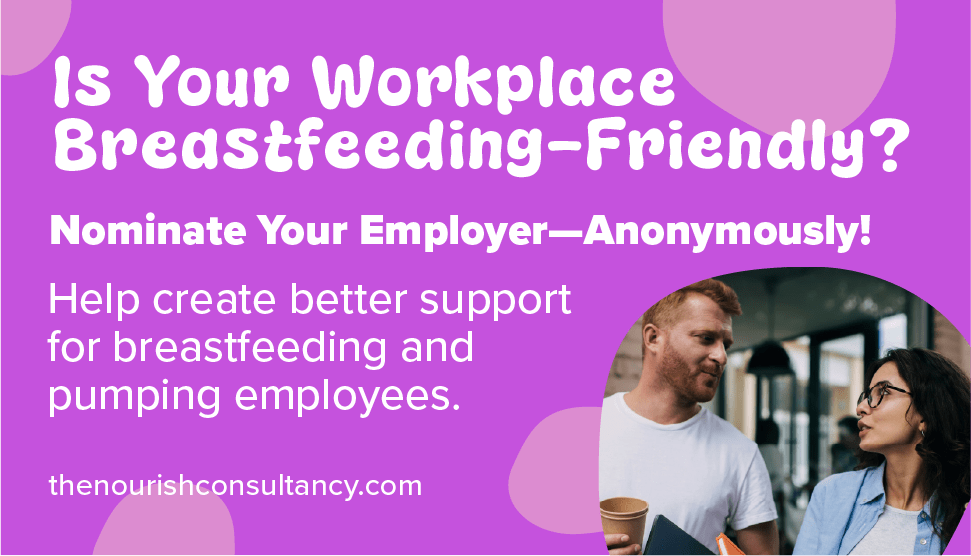Introduction
In this guide we look at what mastitis is, what causes it, and what you can do to try and avoid it. Included are real-life mama stories on breastfeeding and mastitis, plus tips and advice on how to cope with mastitis.
We’ll also look at the latest treatment measure for mastitis so that if you do find yourself suffering from mastitis you know how to act fast to overcome it.
This free online guide has been designed to provide you with everything you need to know about mastitis, including tips and advice on acting fast to catch mastitis early.
What is mastitis?
Mastitis is a condition whereby the breast(s) become inflamed and engorged. Sometimes there can be a bacterial infection present, but not always. It is caused by stasis of milk, so milk not being removed from the breast which can lead to a blockage.
Many women who have had mastitis describe it as coming on suddenly and feeling as if they are getting the flu.
Causes of mastitis
Here are some of the issues that can lead to mastitis developing. Nipple damage caused by ineffective attachment; this can lead to bacteria having a direct route into the breast, to cause infection.
- Infrequent or ineffective drainage. This could be as a result of your baby not feeding well, poor attachment/latch, scheduled times of feeding, or cutting feeds short. Or it could be that you are not feeding frequently enough, leading to milk not being removed from the breast.
- Blocked ducts, milk blisters or blebs
- Missing feeds
- Stopping breastfeeding abruptly
Other mastitis risk factors for mastitis
- Tight or restrictive clothing that is putting pressure, stopping flow of milk from the breast.
- Oversupply
- Illness in mother or baby
- Stress and fatigue.
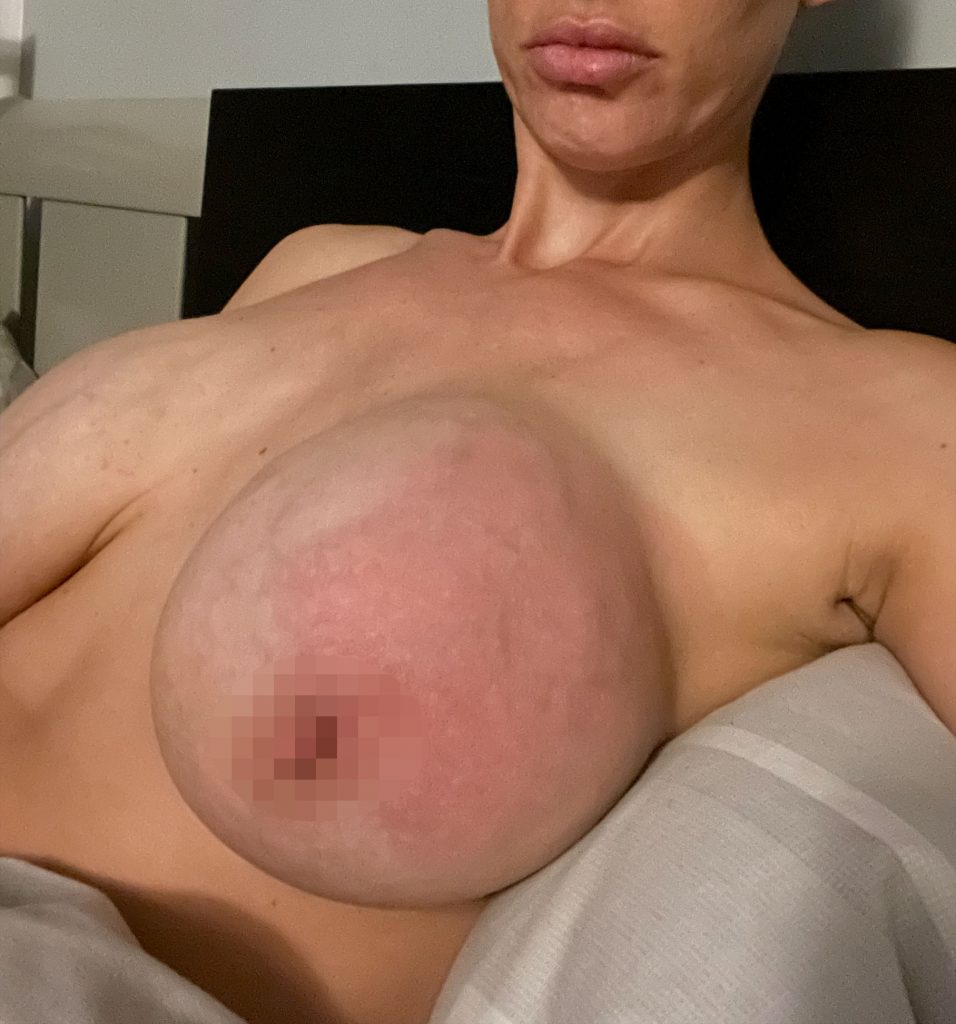
Symptoms of mastitis
Classic symptoms of mastitis include breast pain, swelling and redness. Mastitis may present as flu-like symptoms – such as aching, a headache, fever and chills.
So as a breastfeeding parent, if you feel unwell, like you are getting a cold or flu, especially if you have a temperature, think could this be mastitis?
What does mastitis look like?
Often women get a wedge-shaped, red patch across one breast. Be mindful though if you have a darker skin tone as this ‘classic’ red patch may not present or be so obvious. Therefore it’s important to be familiar with your breasts so you can detect any changes early on.
Sometimes you can feel that ‘lump or bump’ sometimes you can’t. This blockage, if it continues, can lead to inflammation and mastitis.
Beware: Mastitis can come about very quickly
Mastitis is a very painful condition and can come on very suddenly and quickly. It can hit you out of nowhere, and you can go from feeling perfectly fine to not being able to crawl out of bed.
If you’re lucky and can ‘catch it early’ there are some home remedies which you can do to combat it. Things like a cold compress and gently massaging the breasts can alleviate the engorgement and swolleness. It’s also important to continue to feed your baby from the sore breast(s). Hand expression, manual or electric pumping in between feeds can often remedy things.
If you’re still in pain even after trying these things, then you should contact a doctor immediately for a course of antibiotics as it’s likely an infection has taken hold.
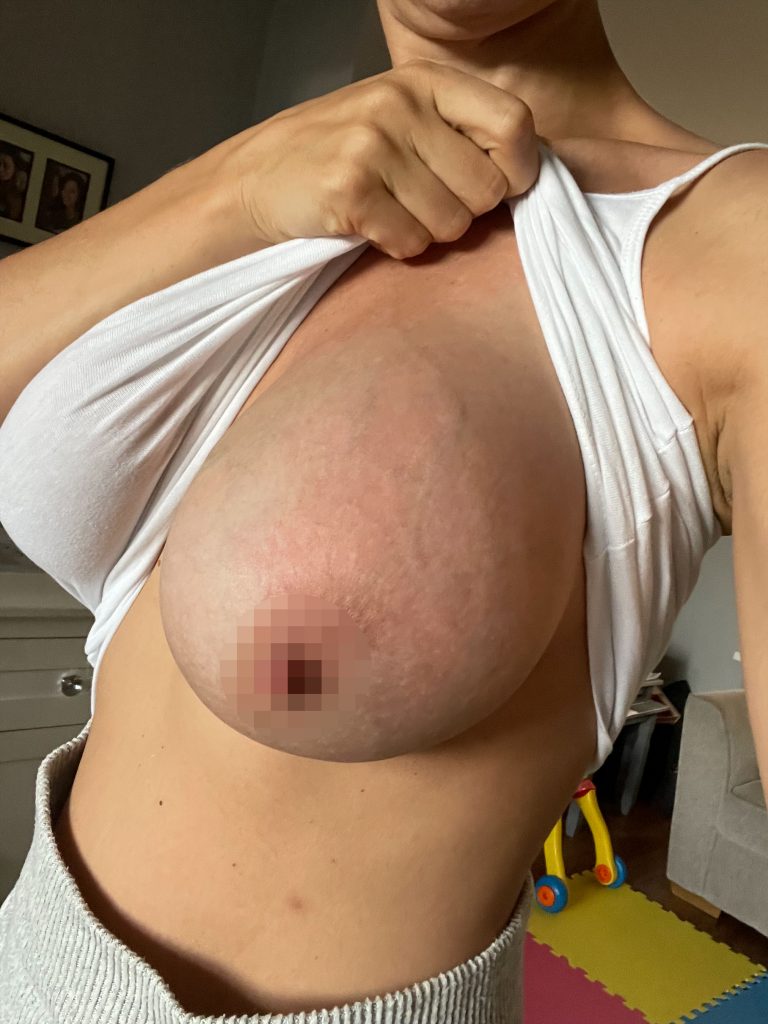
Treatment for mastitis
The guidance around how we treat mastitis changed in 2022. This can mean that old practices and advice may still be out there and being recommended but this won’t be the best way to treat mastitis if you get it. For example, you may be told to feed more to ’empty’ the breast and to rigorously massage the affected area, but this is NOT the right approach anymore!
Here is the new guidance to make sure you have the evidenced-based information you need, right at your fingertips when you need it most.
Steps to take to treat mastitis
Feed your baby responsively – This means following your baby’s hunger cues or signs. You do not need to feed more, pump or express more than you ‘normally’ would. This is a big change to the previous information where we would say to do this more. The reasoning behind this is we don’t want to be encouraging more milk, just effectively removing the milk you have! Increased supply can make the inflammation worse.
Use a cold compress – A cold compress or ice pack will help reduce the swelling. Avoid warm compresses as this again can increase the inflammation.
Do not use firm massage – Use gentle sweeping motions from your breast, up towards your armpit. This can help reduce the extra fluids in the breast (not the milk) that are as a result of the inflammation. Here is more information on how to perform a breast massage.
Take an anti-inflammatory – If you are able to, you can take anti-inflammatory medication such as ibuprofen, as long as you are not allergic, or they are not contra-indicated for you. They are compatible with breastfeeding. The Breastfeeding Network has lots of good information regarding medications and breastfeeding. Analgesics (Pain killers) and Breastfeeding – The Breastfeeding Network
Recognise the signs early – Not all mastitis is caused by a bacterial infection and if you identify and treat it early you can improve mastitis, even stop it in its tracks sometimes. However, if things are not improving quickly (within 24 hours) or are getting worse, seek medical support. You may need antibiotics.
Keep feeding – Be aware that ‘resting the breast’ is NEVER the right advice! You can’t leave mastitis untreated; you have to move the milk. Milk not moving, infection and inflammation not being resolved, is a recipe for developing a breast abscess! If it’s too painful to feed, then hand express (be aware the inflammation can make the milk flow slower), take ibuprofen (as long as you are able to). Do not just leave that breast to have a break or a rest, this isn’t going to help you!!!
How to treat mastitis with a breast massage
Osteopaths Elise and Katie have developed dedicated techniques for mastitis based on how the breast brings fluid in, makes fluid, and drains fluid. It’s all about tissue structure and the specific physical qualities of mastitis itself.
Their hot tips for basic mastitis massage are:
- 5-10% pressure – light & gentle
- Massage from the edges of the lumps, not the firm centre
- Use massage like a medicine – no less than 4 times/day
Want to learn more? You can read more about this here.

Mamas share their tips for overcoming mastitis



- “I would say feed, feed, feed and get checked ASAP if you think you may have mastitis. My boy was 18 months old when I first got mastitis so it can happen at any point on your breastfeeding journey.” says Sky Walker
- “Mastitis can be draining, so getting bed rest is essential.” advises Petrina O’Halloran
- Returning to work can increase your risk of mastitis as you’re probably not feeding as often. For this reason I’d recommend pumping and emptying your breasts before they get to the point of being so full they feel like they will burst!” says April Robson
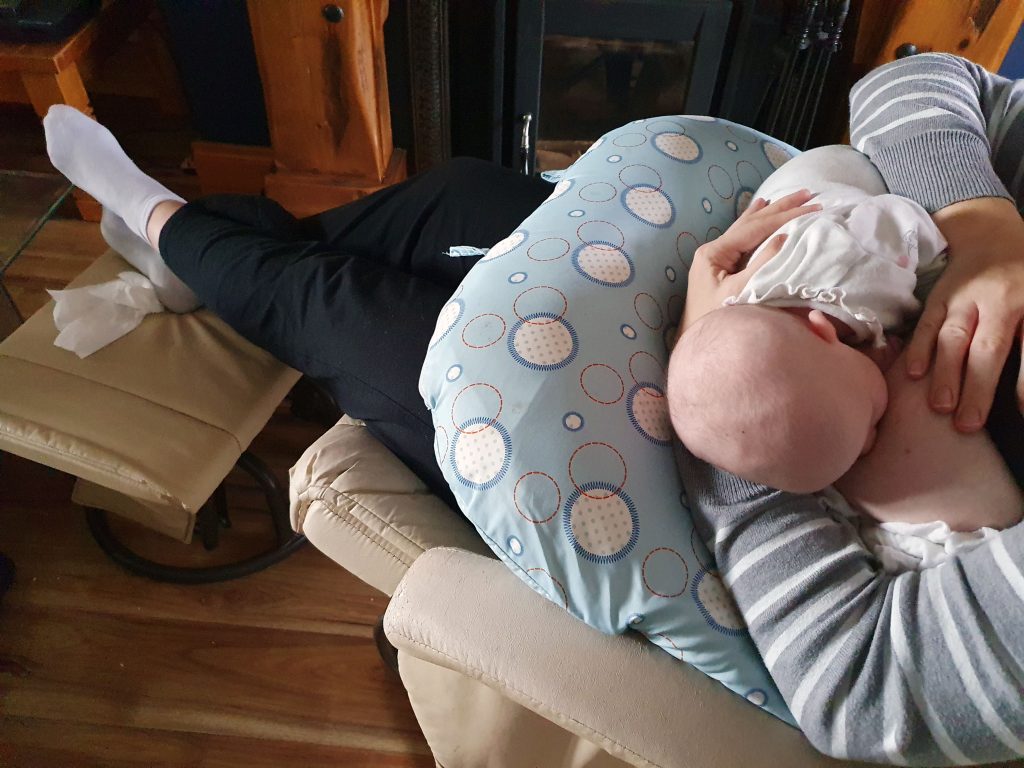
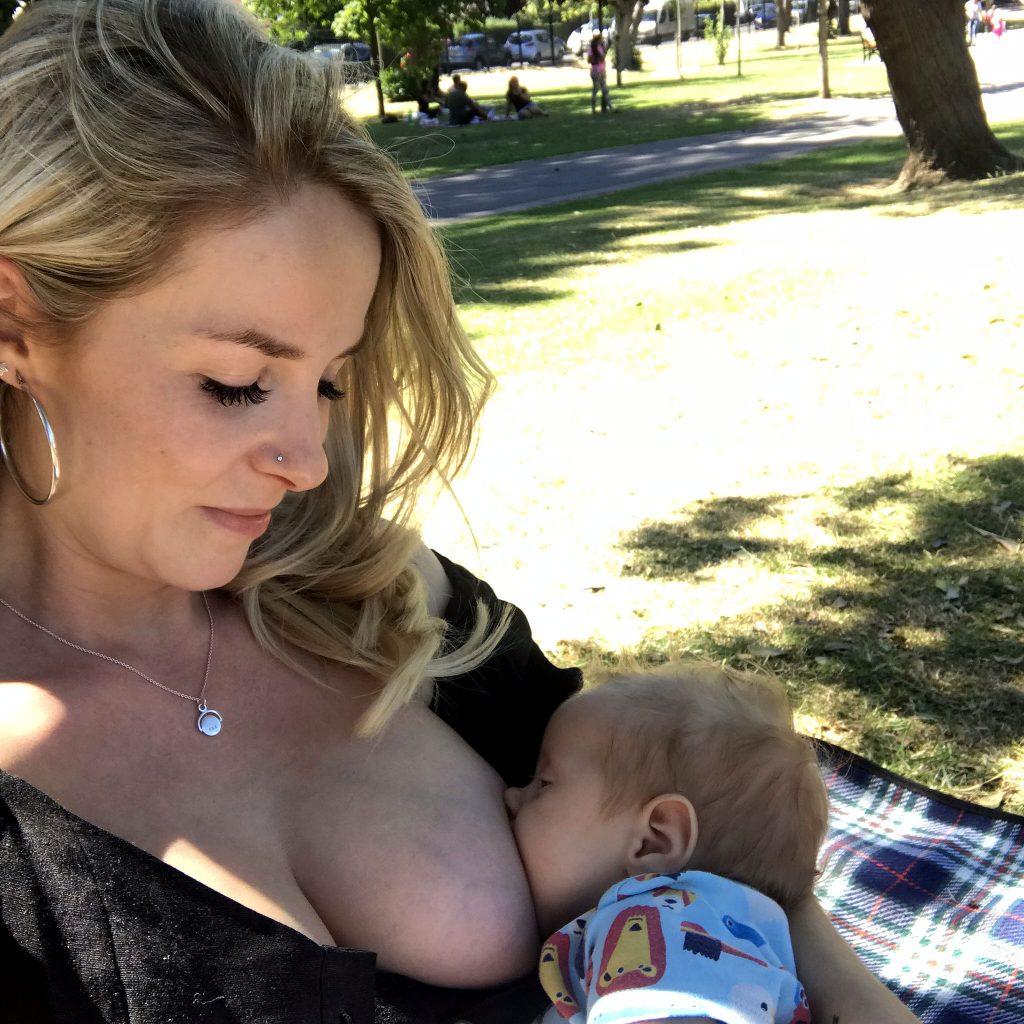
Using a breast pump to manage mastitis
A breast pump can be a valuable tool in the prevention of mastitis, and even in the treatment of mastitis.
If you think you may be at risk of mastitis due to a baby not feeding, or not feeding effectively, then you can use a breast pump to drain your breasts and avoid milk stasis and engorgement.
If you suspect you have mastitis then using a breast pump as soon as possible can help ease the pain of engorgement and prevent your condition from worsening.
The Ardo Electric Breast Pump
When used properly, breast pumps like the Ardo electric breast pumps can be very effective in helping you drain the breast and relieve the symptoms of mastitis. Ardo breast pumps are trusted medical devices which are NHS approved and WHO Code compliant.
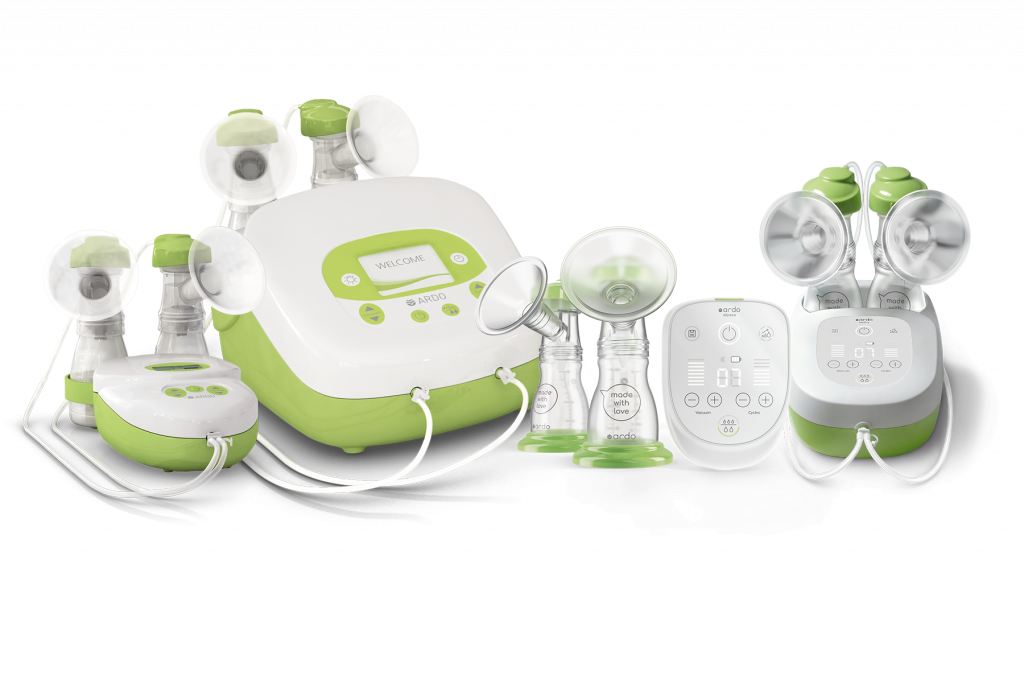
When using a breast pump you should always make sure you have the right flange size for your breasts and the right setting to express your milk gently and effectively. Only pump for short periods of time (5-10 minutes). Over pumping could make engorgement worse and lead to an oversupply of milk.
Ardo UK has a range of electric breast pumps available to buy or rent online at ardomedical.co.uk. You can also check out their comprehensive range of help videos on their YouTube channel here.
Listen to our special podcast episode on Mastitis with mother of three and lactation consultant Olivia Hinge IBCLC. Listen now!
There are a few things that can make us more prone to mastitis. Some things we have control over and some things we don’t…”
Olivia Hinge IBCLC
Mastitis at Christmas
Cases of mastitis increase at Christmas time. In fact, many lactation consultants call it “Christmastitis”.
Alice Lucken IBCLC explains why Christmas is a perfect recipe for mastitis.
Travelling to see family and friends
Car seatbelts and restrictive clothing can cause a blockage to develop. Long car journeys where your baby sleeps for much longer than usual can mean them going without a feed, which can lead to engorgement for you. Some babies do tend to fall asleep and stay asleep in their car seats, so they may have longer periods of time without feeding. (See the Lullaby Trust for more information regarding car seat safety Car seats and SIDS – The Lullaby Trust).
Try and break up the journey by stopping for a drink for yourself and a feed for the baby, to ensure the milk is moving and you reduce the risk of blockages. Also, take some time to think through the outfits you are wearing. You want to make sure they aren’t too tight, and that you can feed in them! It’s pretty annoying to find you’ve worn the wrong bra with your Christmas outfit to allow you to feed properly.
Visitors
Now another thing that Christmas can bring is visitors! This often causes you additional stress. Hosting, entertaining, providing food and drinks etc. can put more pressure on you at a time when you are already super exhausted! It can also mean that feeds aren’t quite what they normally are. They may be a bit rushed, or your baby distracted. You may cut the feed a little short, to try and get back to your guests. Or you may tolerate that rubbish latch as you don’t really want to get your whole boob out in front of your father-in-law!
Ineffective drainage of the milk for these reasons could cause a build-up of milk and a blockage to develop. Many guests can also mean your little one is being passed around and cuddled by everyone and by the time you get them back in your arms they are feeling a bit fussy and over-stimulated. This may result in your baby not feeding so well, or outright refusing to feed or falling asleep before you can feed them. Again, here is a situation where the milk isn’t being removed and bingo, an opportunity for mastitis to develop.
Bugs and viruses
This time of year tends to bring with it lots of bugs and viruses. We are often more run down due to all the added activities and stress of organising, shopping, wrapping etc, as well as the financial strain this time of year can have for many of us. Stress or anxiety can affect your let down reflex and just how well the feed goes. Being run down or under stress can make you more prone to a bout of mastitis.
Tips for looking after yourself
Taking a bit of extra care of yourself is even more important right now. Try to ensure you are eating well, getting rest where you can and look at trying to improve the quality of your sleep. Quantity of sleep is usually lacking for many of us with young children, so focus on making the best of the sleep you are able to get.
Another top tip to help with the stress that comes at this time of year is to and try and have some conversations ahead of time with your partner. Let them know they need to have your back if their mother/sister/aunty says something inappropriate around breastfeeding.nPractice saying, ‘thank you for the advice, we will bear that in mind’. Or a more direct, ‘thank you but that’s not how we are choosing to do things’, can work too.
Try getting your partner on side to help fend off the ‘helpful’ but in reality, actually unhelpful comments that seem to be in full force at this time of year! Christmas can often bring more stress than joy, when you are having ‘advice’ thrown at you from all angles. A good idea might be to plan at least one day that’s just you and whoever is in your immediate family, to spend some quiet time making some family memories.
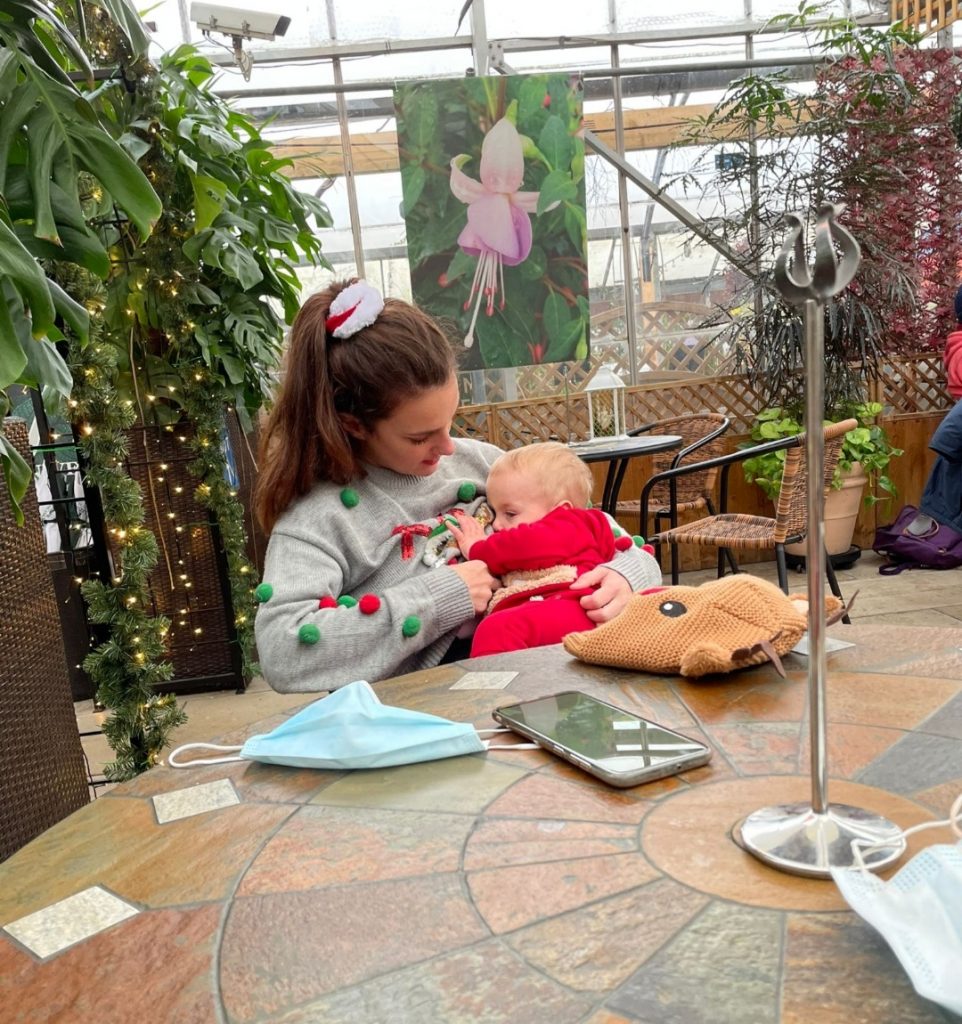
Good to know
Some women can end up with oversupply, blocked ducts and mastitis from over-use of a silicone breast pump, warns Rebecca Scott-Pillai, IBCLC
Meet Grace: “Mastitis nearly ended my breastfeeding journey”

“In the hospital they said I had been on the verge of becoming septic from my mastitis. I honestly had no idea how unwell mastitis can make you and how quickly things can deteriorate. From feeling some pain to being taken to hospital via ambulance, it had happened in less than 48 hours.
It took me over a week to recover properly at home, taking oral antibiotics and resting lots. It was very difficult caring for my baby while I felt so unwell and managing the pain. Luckily my dad was working from home so was able to check on me every day while my husband was at work. Without his support, I think I would have given up on breastfeeding due to soreness and exhaustion. I am so proud that in end we are still breastfeeding through blood, sweat, and tears!
You can read more about Grace’s mastitis experience here.
How to avoid mastitis when you stop breastfeeding
If you are weaning your child off the breast, it is important that parents reduce the amount of feeds gradually. This is so as to avoid common issues such as blocked ducts which can lead to mastitis, or in some cases a breast abscess. If nursing sessions are cut down too quickly, then the build-up of milk may cause swelling and inflammation which is often uncomfortable and requires prompt self-help measures and in some instances, medical support from a health professional.
You can find out what to expect when you stop breastfeeding here.


